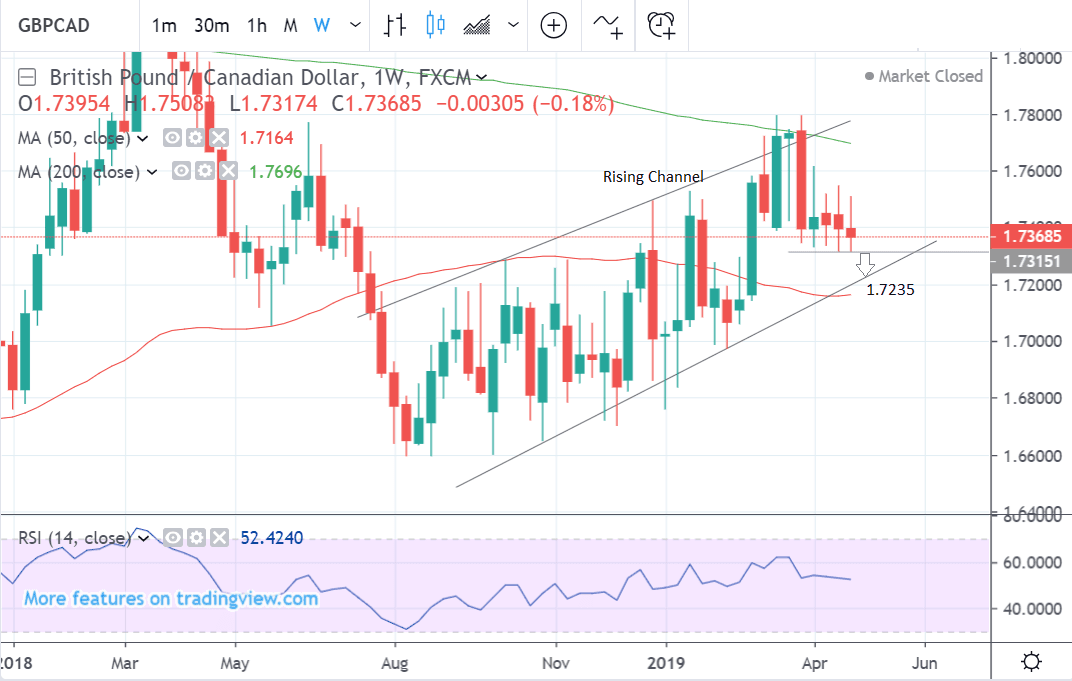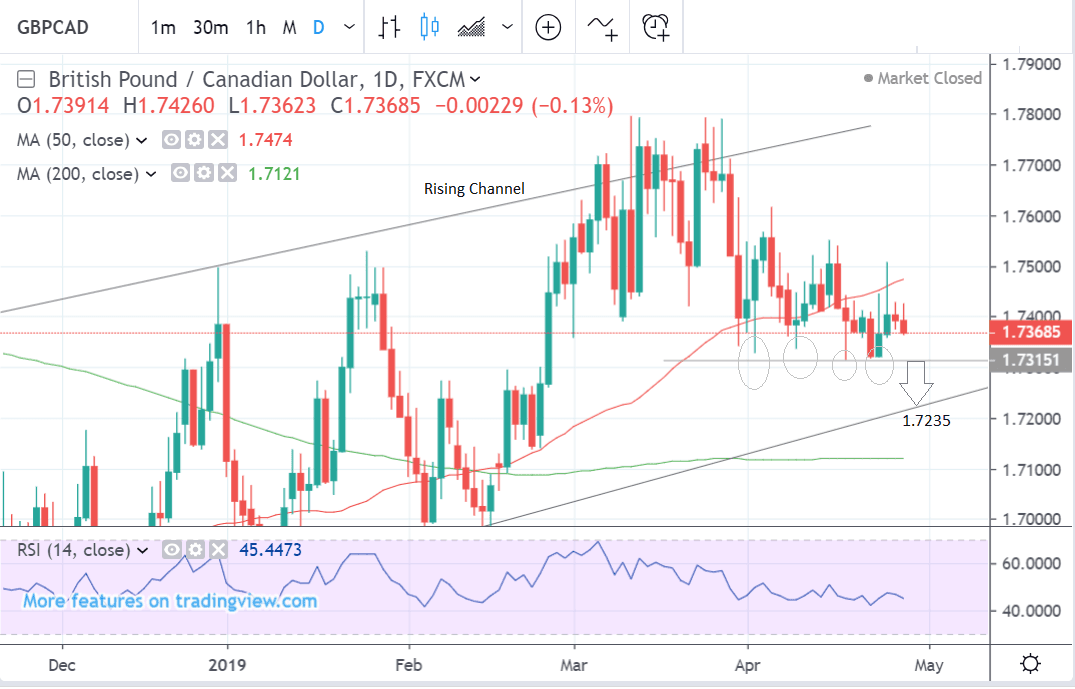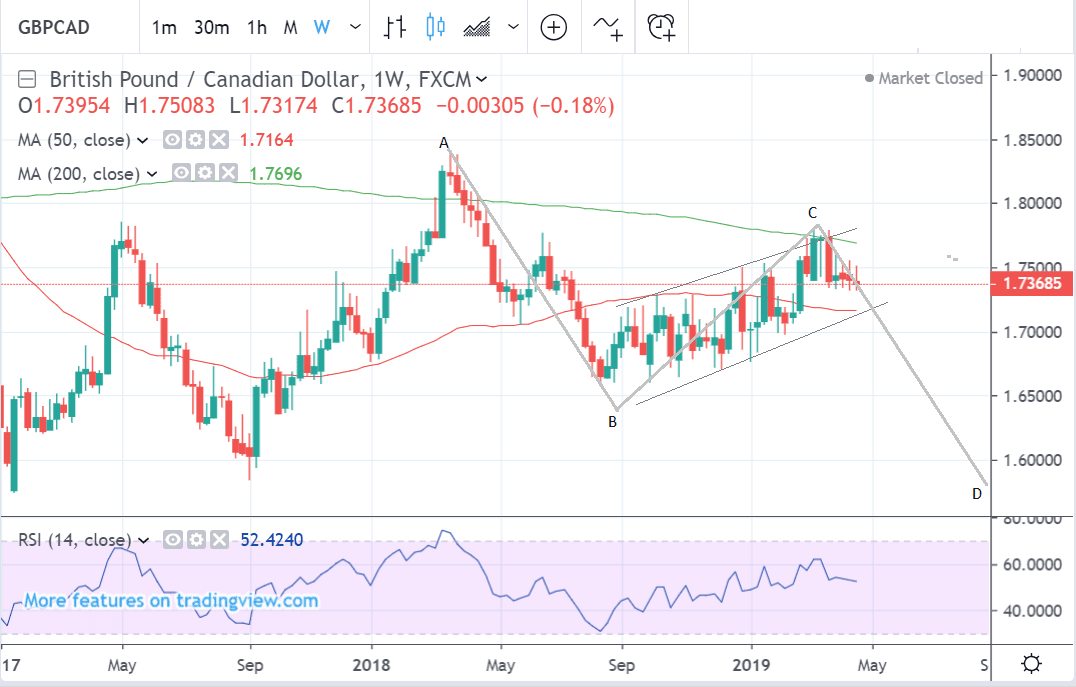Pound / Canadian Dollar Rate Week Ahead Forecast: Still Threatening to Break Lower
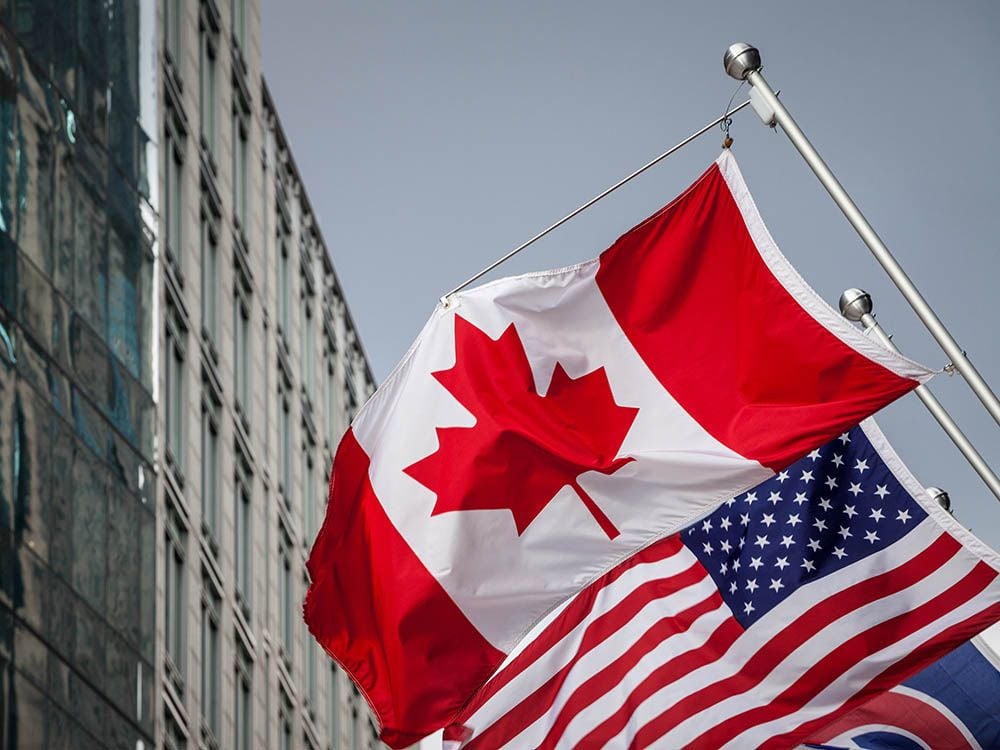
Image © Adobe Images
- GBP/CAD biased to downside after peaking at top of channel
- Multiple touches of 1.73 could bode weakness
- BOE meeting main driver for GBP; GDP data for CAD
The Pound-to-Canadian Dollar rate is trading a quarter of a percent higher at the start of the new week having been quoted at 1.7426 thanks to a broadly firmer Sterling.
There appears little fundamental justification for Sterling's outperformance at the start of the new week and we note gains aren't significant enough to call this a decisive move move higher.
Indeed, from a technical standpoint, the trend in GBP/CAD is now marginally bearish. In the second half of 2018 the pair rose up and broke temporarily out of the top of an ascending channel before reversing and falling back inside. The break was probably an exhaustion break indicating the trend had peaked.
The reversal lower has been strong enough to expect more downside and although the pair has been going sideways for four whole weeks following the initial drop, it looks more likely there will be an eventual continuation lower than a rise. The move down since the peak somehow also looks unfinished, suggesting more downside still to evolve.
For confirmation of more downside, the pair would have to break below the range lows at 1.7315 to open the way to a decline down to the next key support level at 1.7235, at the lower channel line and just above the 200-day moving average (MA). This could happen in the week ahead.
The multiple touches on the 1.7325-15 support level is often a sign the pair could eventually break lower, as like a stone skimming across a pond the price usually eventually breaks below the surface level and sinks.
Another secondary factor in favour of more declines is the shape of the market ever since the 2018 highs. It looks very much like the pair is in the process of unfolding an ABCD pattern lower from there with the C-D leg yet to unfold, but potentially taking the exchange rate all the way down to circa 1.60, over the next 12 months.
Time to move your money? Get 3-5% more currency than your bank would offer by using the services of foreign exchange specialists at RationalFX. A specialist broker can deliver you an exchange rate closer to the real market rate, thereby saving you substantial quantities of currency. Find out more here.
* Advertisement
The Canadian Dollar: What to Watch this Week
February GDP is probably the next most important release for the Canadian Dollar. It is expected to show a 0.1% rise when it is released on Tuesday at 13.30 BST, after gaining 0.3% in the previous month. This is equivalent to a 1.4% rise from a year ago, down from 1.6% previously.
“There could be more downside for the loonie if GDP growth slows in February from January’s surprisingly strong 0.3% month-on-month rate. Slower growth would support the BoC’s shift to a neutral stance,” says Raffi Boyadijian, an economist at broker XM.com.
Last week saw the Canadian unit tumble after the central bank dropping its tightening bias, and “not even a bullish oil market could prevent the loonie from hitting near 4-month lows,” says Boyadijian.
Stephen Poloz, the governor of the BOC is scheduled to speak on Tuesday at 16.00 and Wednesday at 21.15 and markets will be looking for further potential clarifications on the BOC's intentions on raising interest rates in the future.
Oil can be another major factor influencing the Canadian Dollar as it is the country's largest foreign currency earner.
In the last week, oil prices have fallen on fears OPEC may lift production constraints due to Trump’s decision not to renew Iran sanction waivers.
"CAD is underperforming most major currencies in part because crude oil future prices continue to weaken after US President Trump said on Friday he pressed OPEC to keep prices down. Trump’s comments tend to have a short term impact on crude oil prices before other drivers become more dominant," says Elias Haddad, a foreign exchange strategist with CBA.
The Canadian Oil index meanwhile had formed a double top reversal pattern at the highs which is a technical bad omen for the price and may indicate the long uptrend during 2019 could be either about to undergo a strong correction or reversal altogether.
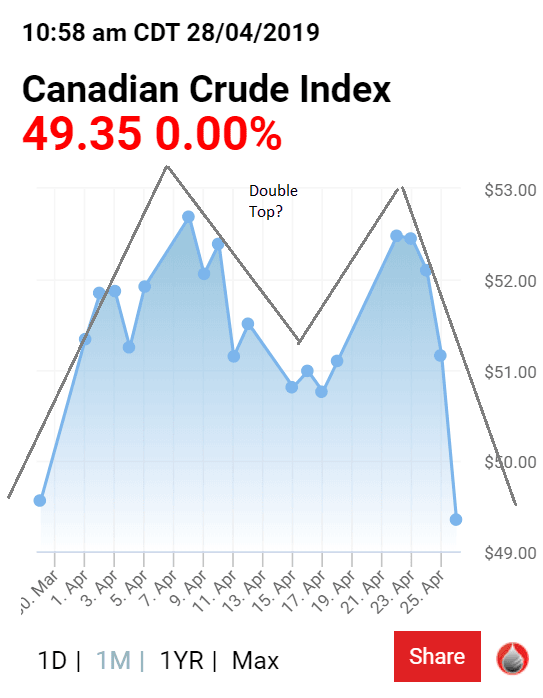
Lower oil prices would be expected to work against further potential CAD strength.
The Pound: What to Watch This Week
The main event for the Pound is the Bank of England (BOE) rate meeting which will end with an announcement on Thursday at 12.00 BST.
The BOE is not expected to raise interest rates at the meeting despite robust economic data. Actual growth remains subdued at 1.2% (the weakest since 2009) due to business uncertainty going "through the roof" because of Brexit, so it is unlikely the Bank will want to change rates until after more clarity emerges.
Despite talk of a ‘grab and go’ rate hike in August, Reuters polls forecast rates will not move until early 2020, a calendar quarter later than was forecast a month ago.
The hunt for a new governor to replace Carney in October adds more uncertainty to the mix.
The BOE will publish its quarterly inflation report at the May meeting which includes the latest economic projections, and this is likely to garner more attention than usual - and possibly produce more volatility.
The pound is unlikely to see a big reaction to the BOE decision but any dovish tilt by the Bank - dovish meaning in favour of lower interest rates - could weigh on Sterling, which slipped to 10-week lows versus the US dollar this week.
Lower interest rates or the threat of them can be negative for a currency because they detract from foreign investment inflows, which tend to favour jurisdictions which can offer higher interest returns.
Local Elections
Thursday could see the ruling Conservative Party lose up to 1000 council seats amidst wide-spread voter unhappiness over the government's inability to deliver Brexit.
Council elections are not typically of interest to currency markets, however because the position of Prime Minister Theresa May is so precarious at this point, the outcome of the polls will be closely watched with a heavy defeat raising questions as to how much longer she can hold onto her position.
"Local elections on Thursday will be the latest barometer of the damage to Conservative support being done by the Brexit shambles. Comparisons with the last elections in the same seats (2015) are complicated by boundary changes, but this was a high watermark for the Tory support compared to their current poll ratings and significant losses are likely," says Adam Cole, a foreign exchange analyst with RBC Capital Markets.
"The immediate implications for GBP will depend May’s prospects for surviving as PM, with imminent change (Johnson is runaway favourite to replace her) lifting political uncertainty further," says Cole.
PMI Data
The other major release in the coming week are the release of PMIs for April. These may be closely watched as they recently declined in contraction territory which is defined as a reading below 50. They are seen as a forward indicator for the economy so this raised concerns softer official economic data is coming.
Although official UK data has not yet followed in their footsteps, another gloomy set of PMIs could increase the risk it will.
The Manufacturing PMI is out on Wednesday at 09:30 B.S.T.
In March the PMI rose because of stockpiling by companies preparing for a potentially distruptive Brexit, rather than due to genuine growth. The number expected by markets is 53.2, down from the previous month's 55.1.
Construction PMI fell to 49.7 in March and is forecast to rebound to 50.4 in April when data is released at 9.30 on Thursday.
UK services PMI is the big number to watch as this is a sector that accounts for over 80% of UK economic activity.
The previous month saw the Service PMI plunge below 50 and into contractionary territory in March, falling to 48.9, but data out on Friday at 9.30 is expected to show a rebound to 50.4 in April. If it disappoints the Pound could suffer.
Brexit Impasse Continues
Brexit could also still be a driver of the Pound in the week ahead. Talks between the government and the opposition Labour party have not reportedly made much progress. At the same time pressure is building on the Prime Minister, Theresa May, to resign. If she does go, the Pound will weaken.
On the other hand, the announcement of a joint deal with Labour could lead the way to a stronger Pound. Yet this seems unlikely given the UK’s adversarial political system which does not favour bi-partisanship.
There seems little incentive for Labour to help the Conservatives out of their current self-destructive, death-spin over Europe. If anything there is probably more chance of greater uncertainty in the short-term, not less, as Corbyn is more likely to bide his time and watch the Conservatives be their worst enemy than help Theresa May out of her current deadlock.

